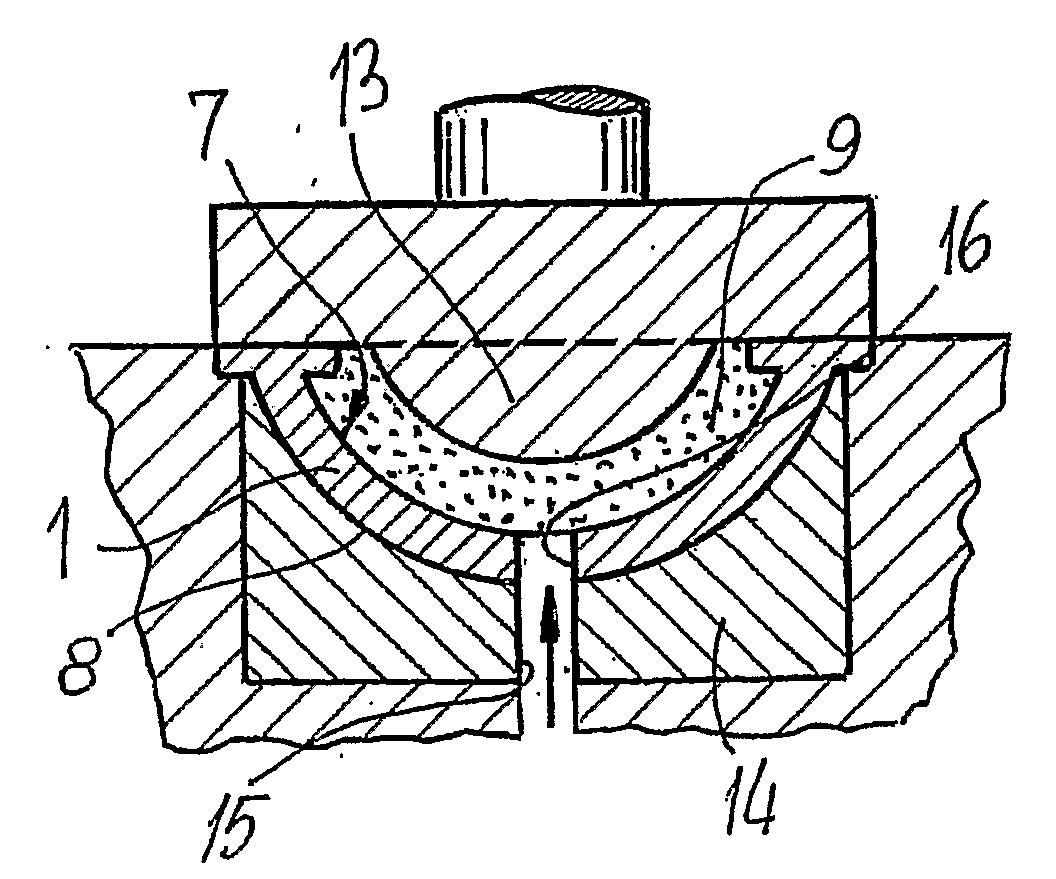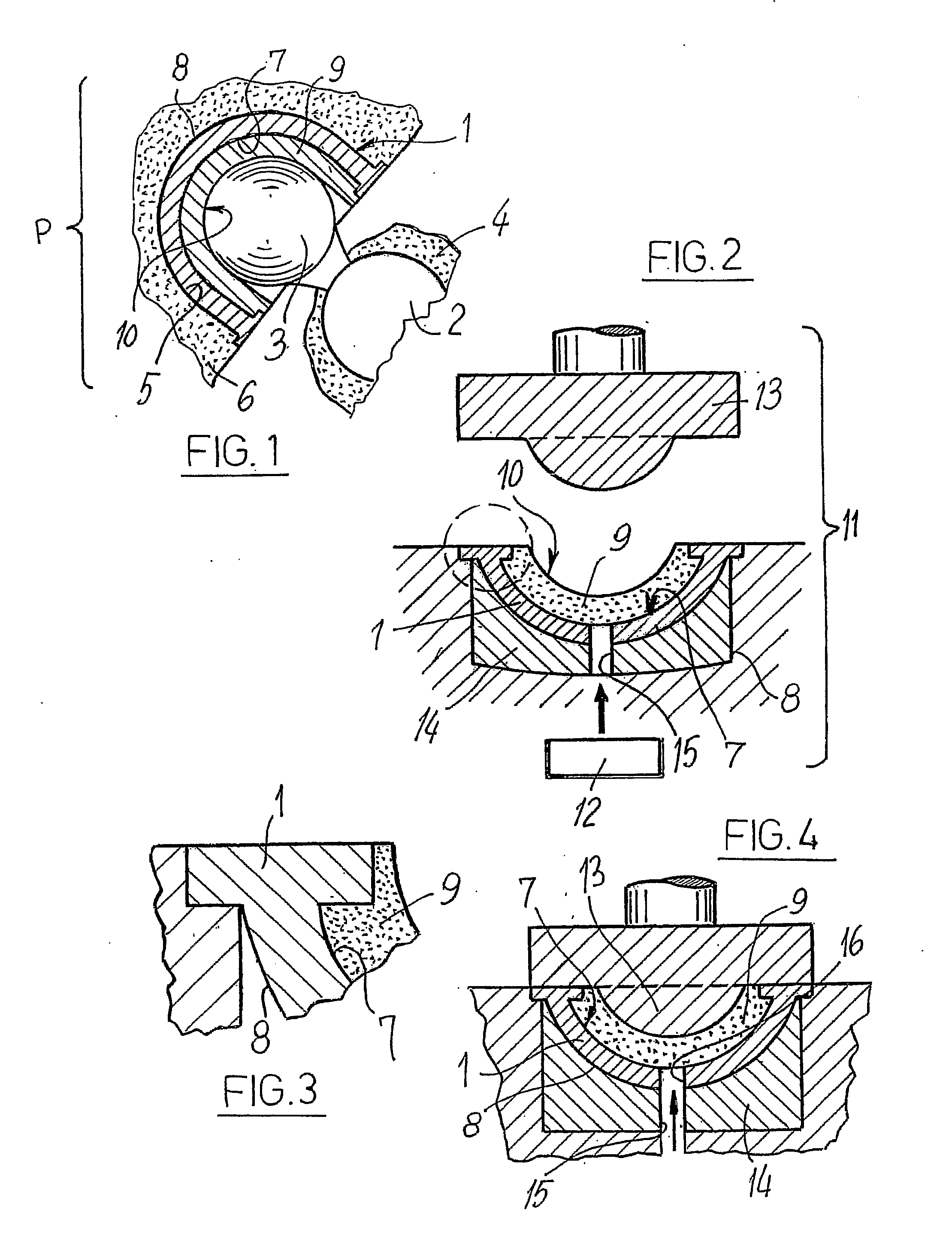Method for coating prosthesis elements and elements obtainable with the method
a technology of prosthesis and coating, which is applied in the field of coating prosthesis elements and elements obtainable with the method, can solve the problems of affecting the life span of the prosthesis, the diameter of the spherical head of the other side of the prosthesis must be limited, and the overall strength of the prosthesis to be affected
- Summary
- Abstract
- Description
- Claims
- Application Information
AI Technical Summary
Benefits of technology
Problems solved by technology
Method used
Image
Examples
Embodiment Construction
[0057]With reference to the Figures, by 1 is generically indicated a cup cotyle, normally shaped like a sphere, to form a prosthesis “P”, which also comprises a portion 2 having a spherical head 3, or substantially such, and which can be applied on a thigh bone 4, which can be coupled with the cotyle 1 to replace the joint of a hip.
[0058]The cotyle 1, which is to be fitted and fixed inside the cotyloid cavity 5 of a hip 6, defines a concave surface 7 and a convex counter surface 8.
[0059]The concave surface 7 can be coated with a layer 9 of polymer material which defines a face 10, also concave, with a low friction coefficient and which is to come into contact with the spherical head 3 of the portion 2.
[0060]To make the layer 9, the polymer material is prepared in such a state as to make it mouldable, meaning, in effect, in a state chosen from liquid, fluid or pasty, so that it can shape itself automatically on the concave surface 7.
[0061]According to the method for coating prosthesi...
PUM
| Property | Measurement | Unit |
|---|---|---|
| friction coefficient | aaaaa | aaaaa |
| friction coefficient | aaaaa | aaaaa |
| 45° angles | aaaaa | aaaaa |
Abstract
Description
Claims
Application Information
 Login to View More
Login to View More - R&D
- Intellectual Property
- Life Sciences
- Materials
- Tech Scout
- Unparalleled Data Quality
- Higher Quality Content
- 60% Fewer Hallucinations
Browse by: Latest US Patents, China's latest patents, Technical Efficacy Thesaurus, Application Domain, Technology Topic, Popular Technical Reports.
© 2025 PatSnap. All rights reserved.Legal|Privacy policy|Modern Slavery Act Transparency Statement|Sitemap|About US| Contact US: help@patsnap.com



